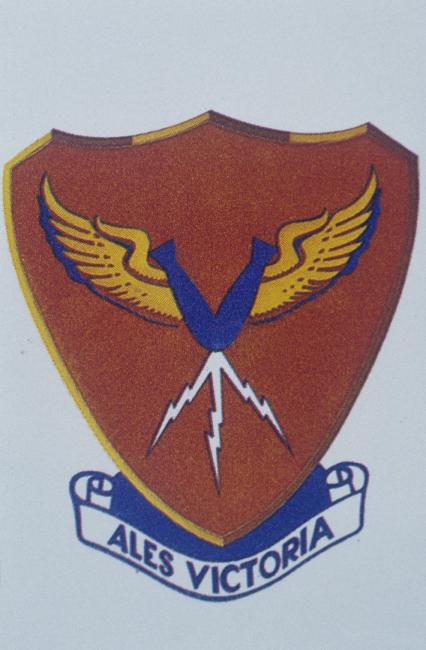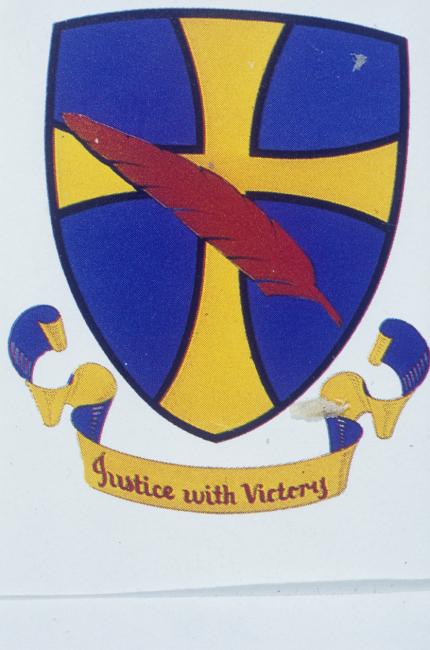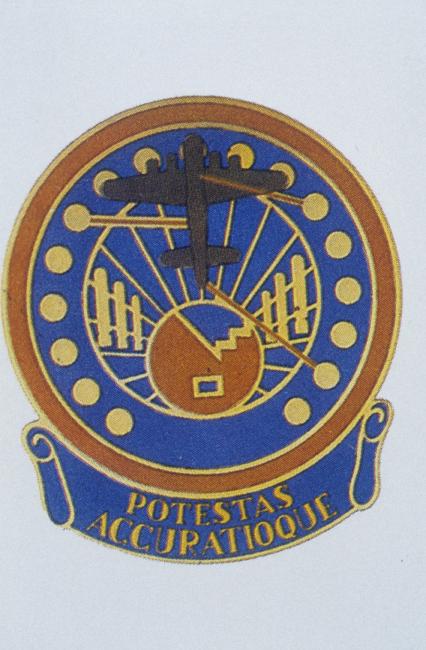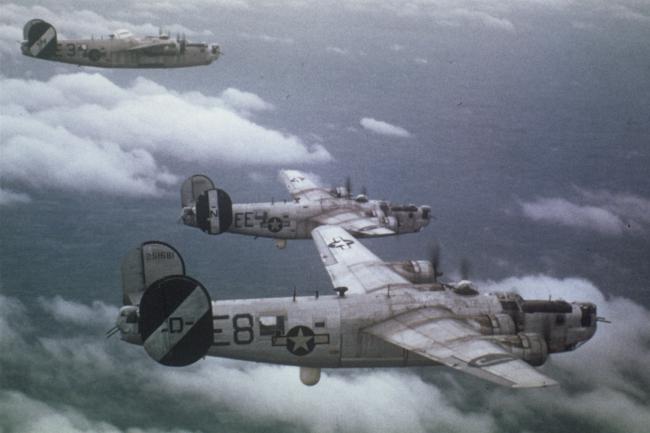8th Air Force 176
5 January 1944
Object Number - UPL 33770 - "Bombs dropped by planes of the 96th Bombardment Group, 8th Air Force on 5 January 1944, head for their target, the airfield at Bordeaux, France."
Description
This mission consists of five elements: The first element is a combined force of 131 B-17s are despatched by 1st Bomb Division: 92BG; 303BG; 305BG; 306BG; 379BG; 384BG; and 482BG to bomb the shipyards and industrial areas of Kiel, Germany. 119 are effective on the target. 5 aircraft are lost to enemy action - 17KIA 23POW 10INT. 1 B-17 from 303BG/360BS and 1 B-17 from 379BG/526BS sustain a mid-air collision during assembly - 20KIA. 3 other B-17s were involved in take-off crashes - 15KIA 15RTD. 61 aircraft were damaged; 5 airmen were WIA.
The second element is a combined force of 114 B-24s from 2nd Bomb Division: 44BG; 93BG; 389BG; 392BG; 445BG; 446BG and 448BG depatched to also attacked the shipyards and industrial areas at Kiel, Germany. 96 aircraft are effective on the target. 5 aircraft were lost to enemy action - 41KIA 9POW; 1 aircraft was abandoned over England shortly after take-off with mechanical failures of rudder cables and landing gear - 3KOM 7RTD; another aircraft aborted the mission and returned with a full bomb load to base;this aircraft landed too far down the runway and ran off the end - 10RTD. 15 aircraft were damaged.
The bomber gunners of the two elements that went to Kiel claim 41-6-13 of attacking enemy aircraft.
The third element is a combined force of 117 B-17s from 3rd Bomb Division: 94BG; 96BG; 385BG; 388BG; and 447BG despatched to bomb the German airfield of Merignac at Bordeaux, France. 112 aircraft are effective on the target. 11 aircraft are lost to enemy action - 37KIA 30POW 40EVD 3INT. 1 aircraft crashed on take-off - 10KOM; 1 aircraft with battle damage crashed on return at Badwell Ash, UK - 8KIA 1WIA. 49 aircraft were damaged and 20 additional airmen were WIA. The bomber gunners claim 50-10-9 of attacking German fighters.
The fourth element is a combined force of 79 B-17s from 1st Bomb Division; 91BG; 351BG; 381BG; and 401BG despatched to bomb the German airfield at Tours, France. 78 aircraft are effective on the target. 1 aircraft is lost to enemy action - 1KIA 6POW 3EVD. No other aircraft are damaged and no other airmen are wounded. The bomber gunners of this element claim 2-0-0 of attacking enemy aircraft.
The fifth, and last, element of this mission is a combined force of 78 B-17s from 3rd Bomb Division: 95BG; 100BG; and 390BG. The ball bearing plants at Elberfield, Germany were the primary target for this mission, but the target was obscured by clouds so the following military targets of opportunity were attacked: Neuss; Geilenkirchen; Dusseldorf and Wassenburg, Germany (number of aircraft attacking each target not determined from source data). 2 aircraft from 95BG are lost to enemy action - 1KIA 16POW (2DIC) 1EVD; 1 aircraft with battle damage crash landed at RAF Tarrent Rushton - 1 airman slightly injured 10RTD. 22 aircraft were damaged and 2 airmen were WIA. The bomber gunners of this element claim 2-5-2 of attacking enemy aircraft.
Mission Details
BORDEAUX/MERIGNAC (Primary)
Description: MERGINAC AIRFIELD at Bodeaux, France
Aircraft Type: B-17 Flying Fortress
Notes: The lead bombardier was killed in action on the bomb run and the lead was handed over to the low group.

- Unit Hierarchy: Group
- Air Force: Eighth Air Force
- Type Category: Bombardment

- Unit Hierarchy: Group
- Air Force: Eighth Air Force
- Type Category: Bombardment

- Unit Hierarchy: Group
- Air Force: Eighth Air Force
- Type Category: Bombardment

- Unit Hierarchy: Group
- Air Force: Eighth Air Force
- Type Category: Bombardment
Mission Statistics
- Tonnage Dropped: 266.20
- People killed in action: 55
- People wounded in action: 21
- People evaded: 40
- Prisoners of war: 30
- People interned: 3
- People returned to duty: 1
- Enemy aircrafts destroyed by bomber: 50
- Enemy aircrafts probably destroyed by bomber: 10
- Enemy aircraft damaged by bomber: 9
- Aircraft sent: 117
- Aircraft effective: 112
- Aircraft missing in action: 11
- Aircraft damaged beyond repair: 2
- Aircraft damaged: 49
GEILENKIRCHEN (Opportunistic) / NEUSS (Opportunistic) / DUSSELDORF (Opportunistic)
Description: BOMB TARGETS OF OPPORTUNITY
Aircraft Type: B-17 Flying Fortress
Notes: Primary target was ball bearing plants at Elberfeld, target obscured.
![Three airmen of the 100th Bomb Group, Lieutenant Kenneth Menzie, Lieutenant Donald Strout and Lieutenant Norman Scott, plan the route they will take during the next mission in their B-17 Flying Fortress (serial number 42-30380). Image stamped on reverse: 'Reviewed and passed U.S. Army 23 Aug 1943 Press Censor E.T.O. U.S.A.' [stamp]'. Passed for publication 23 August 1943 INTLD 16 General Section Press Censorship Bureau '[stamp], 'Associated Press' [stamp] and '280035.' [Censor no.] Printed caption on reve](https://assets.americanairmuseum.com/s3fs-public/styles/max_650x650/public/freeman/media-378743.jpg?itok=oPPVVi6c)
- Unit Hierarchy: Group
- Air Force: Eighth Air Force
- Type Category: Bombardment

- Unit Hierarchy: Group
- Air Force: Eighth Air Force
- Type Category: Bombardment

- Unit Hierarchy: Group
- Air Force: Eighth Air Force
- Type Category: Bombardment
Mission Statistics
- Tonnage Dropped: 194.00
- People killed in action: 1
- People wounded in action: 2
- People evaded: 3
- Prisoners of war: 14
- People died in captivity: 2
- People returned to duty: 10
- Enemy aircrafts destroyed by bomber: 2
- Enemy aircrafts probably destroyed by bomber: 5
- Enemy aircraft damaged by bomber: 2
- Aircraft sent: 78
- Aircraft effective: 73
- Aircraft missing in action: 2
- Aircraft damaged beyond repair: 1
- Aircraft damaged: 22
KIEL(Primary)
Description: SHIP YARD - INDUSTRIAL AREA
Aircraft Type: B-17 Flying Fortress
Notes: 10 aircraft drop on Targets of Opportunity. Bomber gunner claims are the combined total of B-17 & B-24 groups attackin at Kiel.

- Unit Hierarchy: Group
- Air Force: Eighth Air Force
- Type Category: Bombardment

- Unit Hierarchy: Group
- Air Force: Eighth Air Force
- Type Category: Bombardment

- Unit Hierarchy: Group
- Air Force: Eighth Air Force
- Type Category: Bombardment

- Unit Hierarchy: Group
- Air Force: Eighth Air Force
- Type Category: Bombardment

- Unit Hierarchy: Group
- Air Force: Eighth Air Force
- Type Category: Bombardment
Mission Statistics
- Tonnage Dropped: 215.8
- People killed in action: 52
- People wounded in action: 5
- Prisoners of war: 23
- People returned to duty: 15
- Enemy aircrafts destroyed by bomber: 41
- Enemy aircrafts probably destroyed by bomber: 6
- Enemy aircraft damaged by bomber: 13
- Aircraft sent: 131
- Aircraft effective: 119
- Aircraft missing in action: 5
- Aircraft damaged beyond repair: 5
- Aircraft damaged: 61
KIEL(Primary)
Description: SHIP YARD - INDUSTRIAL AREA
Aircraft Type: B-24 Liberator
Notes: Bomber gunner claims are recorded under the B-17 element.

- Unit Hierarchy: Group
- Air Force: Eighth Air Force
- Type Category: Bombardment

- Unit Hierarchy: Group
- Air Force: Eighth Air Force
- Type Category: Bombardment

- Unit Hierarchy: Group
- Air Force: Eighth Air Force
- Type Category: Bombardment

- Unit Hierarchy: Group
- Air Force: Eighth Air Force
- Type Category: Bombardment

- Unit Hierarchy: Group
- Air Force: Eighth Air Force
- Type Category: Bombardment
Mission Statistics
- Tonnage Dropped: 386.8
- People killed in action: 44
- Prisoners of war: 9
- People returned to duty: 17
- Aircraft sent: 114
- Aircraft effective: 96
- Aircraft missing in action: 5
- Aircraft damaged beyond repair: 2
- Aircraft damaged: 15
TOURS
Description: AIRFIELDS
Aircraft Type: B-17 Flying Fortress
Notes: The 91st Bomb Group becomes the first 8th Air Force Bomb Group to complete 100 missions.

- Unit Hierarchy: Group
- Air Force: Eighth Air Force
- Type Category: Bombardment

- Unit Hierarchy: Group
- Air Force: Eighth Air Force
- Type Category: Bombardment

- Unit Hierarchy: Group
- Air Force: Eighth Air Force
- Type Category: Bombardment

- Unit Hierarchy: Group
- Air Force: Eighth Air Force
- Type Category: Bombardment
Mission Statistics
- Tonnage Dropped: 176.80
- People killed in action: 1
- People evaded: 3
- Prisoners of war: 6
- Enemy aircrafts destroyed by bomber: 2
- Aircraft sent: 79
- Aircraft effective: 78
- Aircraft missing in action: 1
- Aircraft damaged: 10
Connections
See how this entry relates to other items in the archive by exploring the connections below.
People
- Military/Civilian/Mascot: Military
- Nationality: American
- Unit: 384th Bomb Group 544th Bomb Squadron
- Service Numbers: O-798297
- Highest Rank: First Lieutenant
- Role/Job: Pilot

- Military/Civilian/Mascot: Military
- Nationality: American
- Unit: 401st Bomb Group 613th Bomb Squadron
- Service Numbers: 35368934
- Highest Rank: Technician Fourth Grade
- Role/Job: waist gunner

- Military/Civilian/Mascot: Military
- Nationality: American
- Unit: 303rd Bomb Group 360th Bomb Squadron
- Service Numbers: 20273063
- Highest Rank: Sergeant
- Role/Job: Ball Turret Gunner
- Military/Civilian/Mascot: Military
- Nationality: American
- Unit: 381st Bomb Group 532nd Bomb Squadron
- Service Numbers: O-811523
- Highest Rank: Second Lieutenant
- Role/Job: Navigator

- Military/Civilian/Mascot: Military
- Nationality: American
- Unit: 379th Bomb Group 525th Bomb Squadron
- Service Numbers: 16049064
- Highest Rank: Sergeant
- Role/Job: Tail Gunner
Aircraft

- Aircraft Type: B-17 Flying Fortress
- Nicknames: Little Audrey
- Unit: 306th Bomb Group 384th Bomb Group Base Air Depot 1 368th Bomb Squadron 544th Bomb Squadron

- Aircraft Type: B-17 Flying Fortress
- Nicknames: The Duchess, Sure Stuff
- Unit: 303rd Bomb Group 359th Bomb Squadron

- Aircraft Type: B-17 Flying Fortress
- Nicknames: Sky Wolf
- Unit: 303rd Bomb Group 358th Bomb Squadron

- Aircraft Type: B-17 Flying Fortress
- Nicknames: Problem Child : Old Reliable
- Unit: Base Air Depot 1 547th Bomb Squadron 384th Bomb Group 305th Bomb Group 367th Bomb Squadron

- Aircraft Type: B-17 Flying Fortress
- Nicknames: Bad Check
- Unit: 303rd Bomb Group 427th Bomb Squadron
Revisions
Lee Cunningham 1-Dec-2015 Correction to personnel dispositions in Tours element based on National Archives MACR 1962.
Lee Cunningham 1-Dec-2015. Added statistics for Tours element based on "The Mighty Eighth War Diary", Roger A. Freeman and "Losses of the 8th & 9th Air Forces", Stan Bishop & John A. Hey MBE.
Lee Cunningham 1-Dec-2015. Added statistics to B-24 element attacking at Kiel based on "The Mighty Eighth War Diary", Roger A. Freeman and "Losses of the 8th & 9th Air Forces", Stan Bishop & John A. Hey, MBE; casualties cross checked from MACR data.
Lee Cunningham 1-Dec-2015. Added statictics to B-17 element attaking at Kiel based on "The Mighty Eighth War Diary", Roger A. Freeman and "Losses of the 8th & 9th Air Forces", Stan Bisho & John A. Hey, MBE; casualties cross check with MACR data.
Lee Cunningham 1-Dec-2015. Added statistics to Elberfeld element based on "The Mighty Eighth War Diary", Roger A. Freeman and "Losses of the 8th & 9th Air Forces", Stan Bishop & John A. Hey; casualties cross checked with MACR data.
Lee Cunningham 1-Dec-2015. Added and corrected statistics for Bordeaux/Merignac based on "The Mighty Eighth War Diary", Roger A. Freeman and "Losses of the 8th & 9th Air Forces", Stan Bishop and John A. Hey, MBE and cross checked from MACR data.
Lee Cunningham -Dec-2015. Added Mission Narrative based on "The Mighty Eighth War Diary", Roger A. Freeman and "Losses of the 8th & 9th Air Forces", Stan Bishop & John A. Hey, MBE.
Lee Cunningham, 8th Air Force missions research database / Stan Bishop's 'Losses of the US 8th and 9th Air Forces', the Combat Chronology of the US Army Air Forces and the work of Roger Freeman including the 'Mighty Eighth War Diary'.


